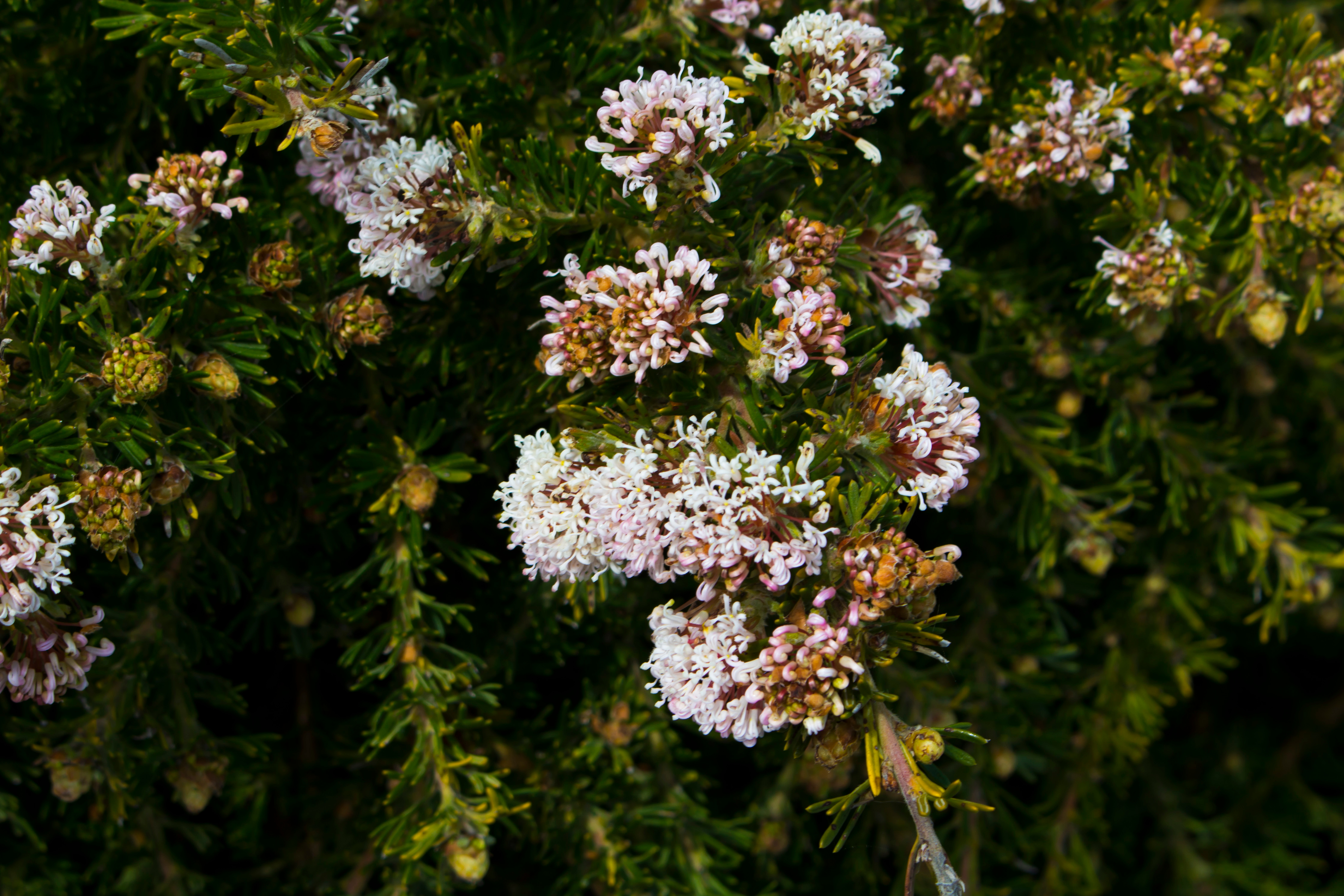Grevillea crithmifolia
(Grevillea crithmifolia)

Description
Grevillea crithmifolia is a species of flowering plant in the family Proteaceae and is endemic to the south-west of Western Australia. It is a dense shrub with linear leaves, divided leaves with narrowly oblong lobes, or both, and clusters of pale pink to creamy-white flowers. Grevillea concinna is a dense shrub that typically grows to a height of 0.6–2.5 m (2 ft 0 in – 8 ft 2 in), its branchlets covered with shaggy hairs. The leaves are crowded, either linear, 10–20 mm (0.39–0.79 in) long and 0.7 mm (0.028 in) wide or divided and 5–10 mm (0.20–0.39 in) wide with two to five narrowly oblong lobes 0.7–1.7 mm (0.028–0.067 in) wide, or both. The flowers are pale pink to creamy-white and arranged in clusters on a rachis 6–12 mm (0.24–0.47 in) long, the pistil 4.8–6.0 mm (0.19–0.24 in) long. Flowering occurs from June to September and the fruit is an elliptic to oval follicle 12–15 mm (0.47–0.59 in) long. Grevillea crithmifolia was first formally described in 1830 by Robert Brown in the Supplementum primum prodromi florae Novae Hollandiae from specimens collected by Charles Fraser in 1827 in the Swan River Colony.The specific epithet (crithmifolia) means "Crithmum-leaved". Grevillea crithmifolia usually grows in near-coastal woodland or scrub between Wanneroo and Yalgorup National Park with a disjunct population near Dongara in the Swan Coastal Plain biogeographic region of south-western Western Australia. This grevillea is listed as "not threatened" by the Department of Biodiversity, Conservation and Attractions. Plants in the genus Grevillea are shrubs, rarely small trees with simple or compound leaves arranged alternately along the branchlets. The flowers are zygomorphic and typically arranged in pairs along a sometimes branched raceme at the ends of branchlets. The flowers are bisexual, usually with four tepals in a single whorl. There are four stamens and the gynoecium has a single carpel. The fruit is a thin-walled follicle that splits down only one side, releasing one or two seeds before the next growing season. The genus Grevillea was first formally described in 1809 by Joseph Knight from an unpublished manuscript by Robert Brown. Knight gave the spelling Grevillia, corrected by Brown in 1810 to Grevillea in Transactions of the Linnean Society of London.The genus was named in honour of Charles Francis Greville, an 18th-century patron of botany and co-founder of the Royal Horticultural Society.
Taxonomic tree:







